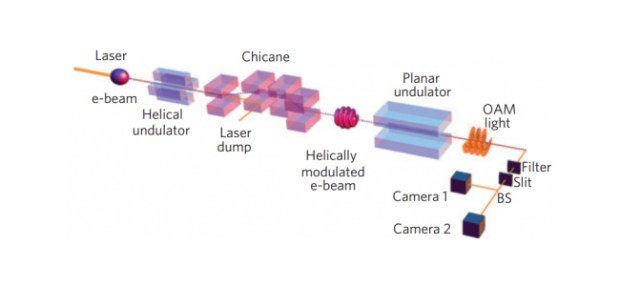The spiral shaped light generated by the free-electron laser beams increases throughput over optical fibre.
In recent years, optical fibre has hit some important milestones with technologies that enhance both the capacity and speed of data transfer over FTTH networks. Other advances have focused on the development of low latency fibre optics networks that minimize the reflection of beams of light within the fibre, thus reducing the delay in the propagation and transmission of data packets over the network. If that weren’t enough, scientists at the SLAC National Accelerator Laboratory have discovered a new method for increasing data throughput over optical fibre by using spiral light with electron beams.
This technique was first theorized in the 1990s and has been implemented using the projection of laser beams through holographic grating masks. The results obtained by the research project of a team of physicists from SLAC and UCLA have nonetheless demonstrated that it is possible to create this type of light using an electron beam.
Free electron laser beams have the characteristic of generating light with a wider wavelength range and in relatively short, intense pulses, providing the possibility of generating orbital angular momentum light at X-ray wavelengths in the same way that the Linac Coherent Light Source -LCLS- X-ray laser uses electrons to generate X-ray pulses
To create light in the shape of a spiral, the unmodulated electron beam interacts with a linearly polarized laser in a helicoid undulator, sending two simultaneous pulses, one with electrons and the other, via the undulator, made of laser light. With the combination of both pulses, an energy pattern is printed on the electrons according to their position in the concentrated laser beam.

This light beam travels longitudinally through a group of activating magnets known as a chicane, which causes the most energetic electrons to reach the ones with lowest energy, repositioning them through compaction, resulting in a helically micro-grouped spiral-shaped beam of light. This beam of light goes into a second undulator which makes the electrons move and radiates light with OAM at the fundamental frequency in a spiral pattern.
This novel technique of high intensity spiral X-rays developed by SLAC scientists opens up new lines of research aimed at creating technologies that can exponentially increase the speed and volume of data transmission over optical fibre.
Images | via Flickr – Greg Hayter – and SLAC









